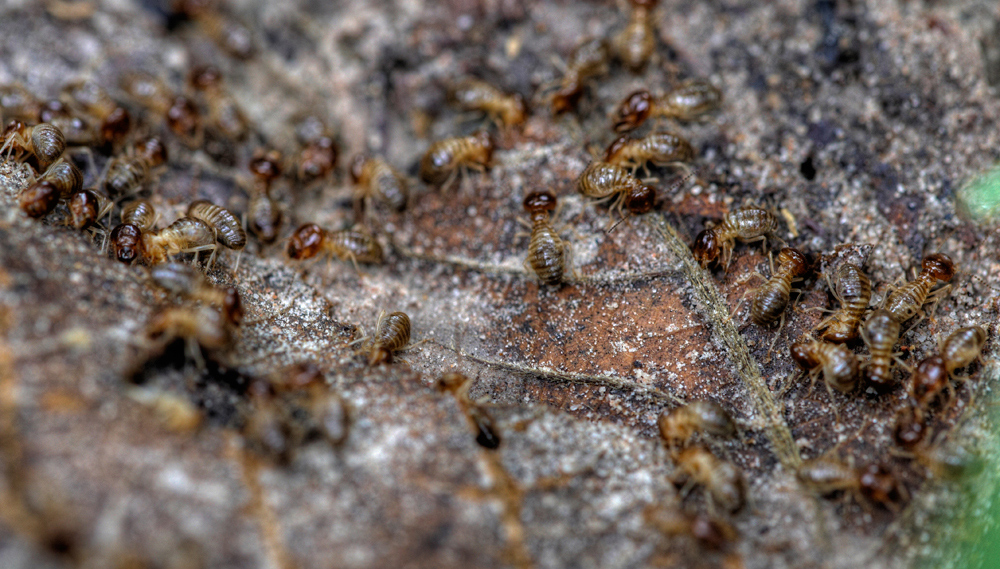As the planet warms, termites could move further out of the tropics, decaying more wood and releasing more carbon dioxide like “tiny cows”, according to a new study in the journal Science.
Three locations in New Zealand were included as study sites. The authors say their research shows the potential impacts of climate change on the carbon cycle in our forests.
The SMC asked experts to comment.
Cate Macinnis-Ng and Tynan Burkhardt (University of Auckland), and Tim Curran and Md Azharul Alam (Lincoln University), study authors, comment:
“Decomposition of woody biomass is an important part of the carbon cycle of forests, woodlands and savannas. As wood breaks down, carbon is returned to the atmosphere. Microbes that contribute to decomposition are sensitive to changing temperature and rainfall but less is known about termites. Termites are important decomposers of dead wood but their role changes in different parts of the world depending on the abundance of termites and environmental conditions. Before this study, it was unclear how climate change might influence the contribution termites make to decomposition processes.
“This global study covering 133 sites across six continents and a range of ecosystem types provides an opportunity to explore what influences decomposition rates under different conditions. Over 100 researchers from around the world used the same method at local sites, leaving wood blocks to rot for a two-year period. Wood blocks were weighed at the beginning and end of the experiment with more weight loss indicating more decomposition of wood. Blocks were enclosed in mesh to exclude termites with half the blocks having holes punched in the mesh to allow exposure to termites.
“We had three study sites in Aotearoa New Zealand, two forests in west Auckland and a third on the Banks Peninsula. The study found termites are most important in tropical seasonal forests, tropical savannas, and subtropical deserts but overall, increasing temperatures increased decomposition rates substantially. There are only three native species of termites so very few of our wood samples had termites in them but as the climate warms, we expect decomposition rates to increase, even without termites. Introduced termite species may further accelerate decomposition as they become more widespread.
“Being part of a global collaboration like this is an opportunity to do exciting science that answers big picture questions. We have very little information about the potential impacts of climate change on carbon storage and cycling in forests of Aotearoa and this global study gives us some insights into the potential changes due to increased temperatures, decreased water availability and interactions with invasive species. By including local sites from Aotearoa in global studies, we can understand where our ecosystems fit in the global carbon cycle and this helps us better predict changes under future climates.”
Conflict of interest: This comment is written by the NZ authors of the study.
Tripti Singh, Senior Scientist/Team Leader (Wood Science Design), Scion Research, comments:
“Termites and wood decay fungi are ubiquitous in nature. They contribute to the carbon cycle by inhabiting and feeding on a wide range of living, dead, and decaying plant matter.
“Termites are insects generally in tropical, subtropical, and warm temperate regions and play an important role in ecosystems. Despite the ecological benefits of termites, they are also significant pests causing damage to timber used in the built environment. There are over 400 different species of termites, however, only a few cause damages of economic importance. Broadly, termites can be divided into four types; 1) The subterranean termites including Coptotermes cause the most economic damage. Nest usually under ground or at ground level, with access to soil moisture. 2) Mastotermes darwiniensis under the second group is most difficult to control, this species is very similar to certain cockroaches, the termites’ closest relatives. 3) Drywood termites, nest in the wood. They do not need mud-tube link to soil, can derive all water needs from wood. 4) Dampwood termites, live and reproduce in damp wood, they are of special importance in the forest.
“Worldwide, approximately 30 termite species are considered invasive and have spread beyond their native ranges, some with significant economic consequences. This study suggests that termites are temperature and rainfall-dependent and with increasing temperature around the world, the presence of termites will likely expand beyond the topical and subtropical reasons of the world.
“Currently, termites are not considered economically important in New Zealand and only three exotic termites are considered to have been established in New Zealand and none of these established species are of economic significance. However, with continuing climate cycling (whether anthropogenically forced or not) a warming habitat is conducive to successful colonisation by species like Coptotermes and has the potential to cause considerable harm to the economy, environment, and trade.
“The ecological consequences of termite invasions remain poorly understood, however, as suggested by this study, the widespread invasion by termites could release more carbon dioxide and methane into the atmosphere and contribute further to climate change.
“Predictive studies on termites such as our ability to pinpoint the species that are most likely to spread are necessary for proactive approaches to invasive termite management.”
No conflict of interest.
